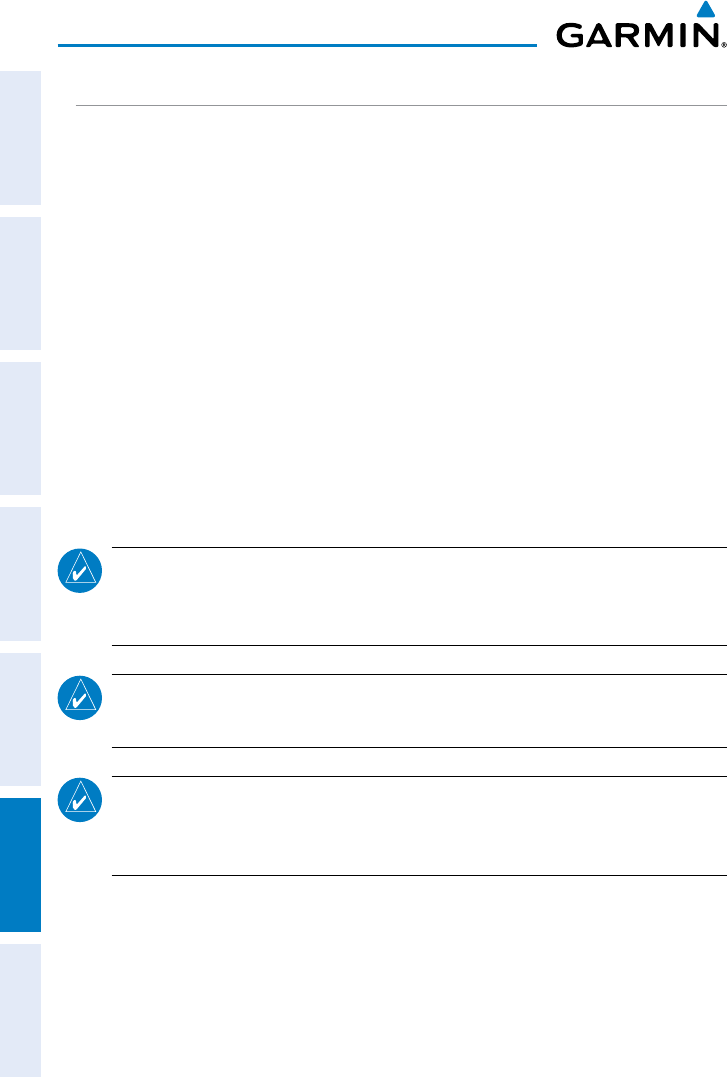
Garmin GPSMAP 695/696 Owner’s Manual
190-00919-00 Rev. F
Appendix E
218
OverviewGPS NavigationFlight PlanningHazard AvoidanceAdditional FeaturesAppendicesIndex
TIS-A LIMITATIONS
TIS-A relies on surveillance of the Mode-S radar system, which is a “secondary
surveillance” radar system similar to that used by ATCRBS. Many limitations are
inherent in secondary radar surveillance. Information provided by TIS-A is neither
better nor more accurate than the information used by ATC. TIS-A is intended only to
assist in visual acquisition of other aircraft in visual meteorological conditions (VMC).
While TIS-A is a useful aid for visual traffic avoidance, system limitations must be
considered to ensure proper use. No recommended avoidance maneuvers are given,
nor authorized, as a direct result of a TIS-A intruder display or TIS-A advisory.
•TIS-Aoperationmaybeintermittentduringturnsorothermaneuvering.
•TIS-Aisdependentontwo-way,line-of-sightcommunicationsbetweentheaircraft
and the Mode-S radar antenna. Whenever the structure of the aircraft comes
between the transponder antenna and the ground-based radar antenna, the signal
may be temporarily interrupted.
NOTE:
Refer to the TIS-A Limitations section of the Aeronautical Information
Manual (AIM) for a more comprehensive explanation of limitations and
anomalies associated with TIS-A.
NOTE:
TIS-A is unavailable at low altitudes in many area of the United States.
This is often the case in mountainous regions.
NOTE:
Garmin is not responsible for Mode S geographical coverage. Operation
of the ground stations is the responsibility of the FAA. Refer to the AIM for a
Terminal Mode S radar site map.
TIS-A information is collected during a single radar sweep. Collected information
is then sent through the Mode S uplink on the next radar sweep. Because of this, the
surveillance information is approximately five seconds old. TIS-A ground station tracking
software uses prediction algorithms to compensate for this delay. These algorithms
use track history data to calculate expected intruder positions consistent with the time
of display. Occasionally, aircraft maneuvering may cause variations in this calculation
and create slight errors on the Map Page which affect relative bearing information and


















